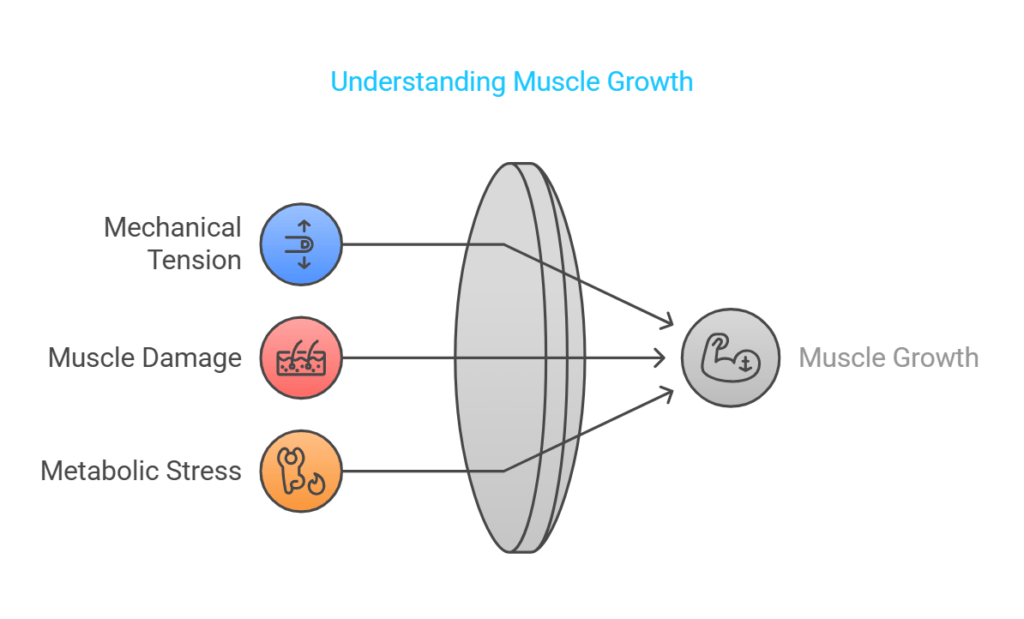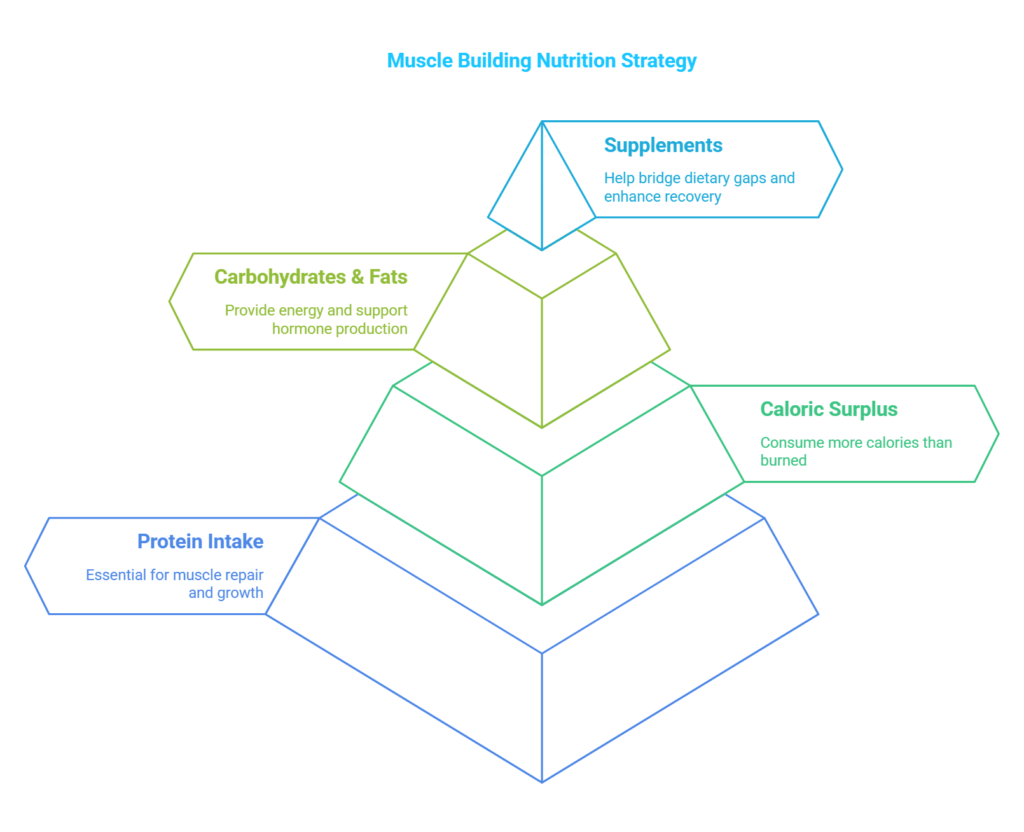Discover the Secrets to Building Muscle Effectively with WellHealth
Embarking on the journey to build muscle is not just about lifting weights; it’s an art and science that requires understanding, patience, and strategy. WellHealth’s “How to Build Muscle Tag” is designed to demystify this process, offering a comprehensive guide for anyone looking to enhance their physique, strength, or athletic performance.
Whether you’re a beginner stepping into the gym for the first time or an experienced lifter looking to break through plateaus, this guide will walk you through the essentials of muscle building, based on WellHealth’s innovative approach.
Understanding Muscle Growth
At the heart of muscle building is the concept of hypertrophy, where muscle fibers repair and grow in response to the stress of resistance training. WellHealth breaks down this process into three key components:
- Mechanical Tension: When you lift weights, the tension on the muscle fibers stimulates them to grow larger and stronger. This is why progressive overload is crucial in your training regimen.
- Muscle Damage: Intense workouts can cause micro-tears in muscle fibers. This damage signals the body to repair these fibers, often leading to them growing back thicker than before.
- Metabolic Stress: The burning sensation you feel during high-rep sets is due to metabolic by-products like lactic acid. This stress can also trigger muscle growth by signaling the body to adapt.
WellHealth emphasizes that understanding these mechanisms can help tailor your training for maximum efficiency, focusing on both the quality and quantity of your workouts.

Nutrition for Muscle Building
Muscle cannot grow without the right fuel, and WellHealth’s nutritional strategy goes beyond just eating more:
- Protein Intake: Protein is the building block of muscle. WellHealth recommends a daily intake of 1.6 to 2.2 grams per kilogram of body weight, sourced from a mix of animal and plant proteins for variety and completeness. Think lean meats, fish, dairy, eggs, and legumes.
- Caloric Surplus: You need to consume more calories than you burn to support muscle growth. However, WellHealth advises a focus on quality calories from whole foods rather than just increasing portion sizes indiscriminately.
- Carbohydrates and Fats: Carbs are not your enemy; they’re the fuel for your workouts. Complex carbs like oats, sweet potatoes, and whole grains provide sustained energy. Meanwhile, fats, especially from sources like avocados, nuts, and fish, are critical for hormone production, including testosterone, which aids in muscle building.
- Supplements: While not mandatory, WellHealth points out that supplements can help bridge dietary gaps. Protein shakes for convenience, creatine for performance, and branched-chain amino acids (BCAAs) for recovery are among the supplements they endorse, but always as an addition to, not a substitute for, whole food nutrition.

Effective Workout Plans
WellHealth tailor’s workout plans to ensure they are both effective and sustainable:
- Compound Movements: These are your bread and butter. Exercises like squats, deadlifts, bench presses, and pull-ups engage multiple muscle groups, leading to more efficient workouts and greater muscle stimulation.
- Progressive Overload: The mantra here is to always keep challenging your muscles. This might mean adding more weight, increasing reps, or tweaking your form to work the muscles differently.
- Rest and Recovery: Muscles grow during rest, not during the workout. WellHealth stresses the importance of rest days, quality sleep, and even active recovery like light cardio or yoga to aid in muscle repair.
- Variation: To avoid plateaus, WellHealth suggests changing up your routine periodically. This could be through different exercises, rep schemes, or even the tempo at which you lift weights.
Beyond the weights, WellHealth encourages integrating other forms of exercise for a well-rounded fitness profile, enhancing not just muscle but also mobility, balance, and cardiovascular health.

Muscle Recovery Techniques for Enhanced Performance and Health
Muscle recovery is pivotal in any fitness regimen, ensuring that you can train effectively, reduce injury risk, and maximize muscle growth. Here, we delve into effective recovery techniques while also dispelling some common myths surrounding muscle recuperation:
Effective Muscle Recovery Techniques:
1. Active Recovery
- Light Exercise: Engaging in low-intensity activities helps in flushing out metabolic waste while promoting healing.
- Dynamic Stretching: This can aid in maintaining flexibility and reducing muscle stiffness.
2. Proper Nutrition
- Post-Workout Meals: A mix of carbs and proteins aids in glycogen replenishment and muscle repair.
- Hydration: Water is crucial for nutrient transport and waste removal.
3. Sleep and Rest
- Quality Sleep: Essential for hormone regulation that supports muscle repair.
- Rest Days: Allows for full recovery of muscles, preventing overtraining.
4. Massage and Self-Myofascial Release
- Massage Therapy: Reduces muscle tension and boosts circulation.
- Foam Rolling: Self-administered relief for muscle tightness.
5. Cold and Heat Therapy
- Cold Therapy: Useful immediately after workouts to reduce inflammation.
- Heat Therapy: Post-48 hours, to increase blood flow for healing.
6. Compression Garments
- Helps in reducing muscle swelling and improving circulation.
7. Supplements
- Protein: Supports muscle repair.
- BCAAs: Can reduce muscle soreness.
- Omega-3s: Anti-inflammatory effects.
8. Mind-Body Techniques
- Yoga/Meditation: Reduces stress, aiding in recovery.
9. Electrolyte Balance
- Essential for muscle function, especially after intense workouts.
10. Contrast Water Therapy
- Alternating between hot and cold to stimulate blood flow.
Common Muscle Recovery Myths:
1. Myth: More Pain Equals More Gain
- Reality: Muscle soreness isn’t a direct indicator of effective workouts. Pushing through excessive pain can lead to injury rather than gains. Recovery is about balance, not enduring pain.
2. Myth: You Must Rest Completely on Rest Days
- Reality: Active recovery can be more beneficial than complete rest. Light activities can enhance recovery by improving circulation without stressing the muscles further.
3. Myth: Ice is Always Better for Recovery
- Reality: While ice is excellent right after workouts to reduce inflammation, heat can be more beneficial days later to promote blood flow and healing. The key is in timing.
4. Myth: Supplements Can Replace a Good Diet
- Reality: No supplement can substitute for a balanced diet. They’re meant to complement, not replace, your nutritional intake.
5. Myth: Stretching Before Exercise Prevents Injury
- Reality: Static stretching before workouts might reduce muscle power. Dynamic stretching or a warm-up is more effective for injury prevention. Post-workout stretching aids in recovery.
6. Myth: You Can Recover Faster by Doing More
- Reality: Overtraining leads to prolonged recovery times and can diminish performance. Recovery needs time, not more activity.
7. Myth: Recovery is Only Physical
- Reality: Mental recovery is as critical. Stress, lack of sleep, or mental fatigue can hinder physical recovery.
8. Myth: All Pain is Bad
- Reality: Some discomfort after intense workouts (DOMS) is normal, but sharp or persistent pain isn’t. Knowing the difference is key to managing recovery.
9. Myth: You Need to Take Painkillers for Muscle Soreness
- Reality: Painkillers might mask pain, allowing you to overdo it. Natural recovery methods like nutrition, rest, and gentle exercise are preferable.
10. Myth: Recovery is Just About Resting
- Reality: Recovery involves a multifaceted approach including nutrition, hydration, active recovery, and sometimes even strategic use of technology like compression wear or recovery apps.
Common Mistakes to Avoid
Even with the best intentions, mistakes can derail your muscle-building efforts:
- Overtraining: More isn’t always better. Without sufficient recovery, you risk injury or burnout, leading to what’s known as ‘overtraining syndrome’.
- Poor Form: Lifting with improper technique not only limits muscle engagement but also increases injury risk. WellHealth advocates for learning and maintaining proper form, even if it means lighter weights initially.
- Neglecting Nutrition: You can’t out-train a bad diet. WellHealth warns against the folly of neglecting dietary needs in favor of more gym time.
Understanding and implementing proper recovery techniques can significantly enhance your fitness outcomes. By debunking these myths, you can adopt a more informed approach to recovery, ensuring that your body not only heals but also grows stronger with each workout cycle. WellHealth advocates for a balanced, science-based recovery strategy that respects the body’s need for both activity and rest. Remember, effective recovery is personalized, and what works for one might not work for another, so listen to your body and adjust your recovery practices accordingly.
FAQs About How to Build Muscle Tag
- Q: How long does it take to see muscle growth with WellHealth?
- A: Visible muscle growth varies but typically starts showing within 8-12 weeks with consistent effort, depending on factors like diet, training intensity, and genetic predisposition.
- Q: Can I build muscle at home with WellHealth’s guidance?
- A: Absolutely! WellHealth provides strategies for bodyweight exercises and minimal equipment setups, making muscle building accessible even without a gym.
- Q: Does WellHealth recommend supplements?
- A: Supplements are seen as enhancements, not necessities. WellHealth promotes a diet-first approach, with supplements like protein powders or creatine used to complement nutritional gaps or increase convenience.
- Q: Is cardio counterproductive for muscle building according to WellHealth?
- A: Not at all. WellHealth believes in a balanced approach where cardio can improve cardiovascular health and aid in recovery without significantly impacting muscle gains if managed properly.
- Q: How can WellHealth help with muscle building plateaus?
- A: By adjusting training variables like volume, intensity, or even the type of exercises, WellHealth helps break through plateaus by keeping the body guessing and adapting.
(Also Read: Morning Cardio Magic: Transform Your Body in 30 Minutes)
Conclusion
WellHealth’s “How to Build Muscle Tag” program transcends traditional gym routines by embedding a holistic view of fitness into its teachings. It’s not just about lifting weights but understanding your body, optimizing your diet, respecting recovery, and maintaining consistency. With Well Health’s guidance, you’re not just building muscle; you’re building a healthier, more resilient version of yourself.
For more personalized guidance, consider diving deeper into Well Health’s resources, joining their community, or consulting with their fitness experts. Remember, muscle building is a marathon, not a sprint. Commit to the process with Well Health’s wisdom, and your body will thank you with strength and vitality.
Disclaimer: The information provided on WellHealth How to Build Muscle Tag is for educational purposes only and should not be considered medical advice. Always consult with a healthcare professional before starting any new exercise or nutrition program
